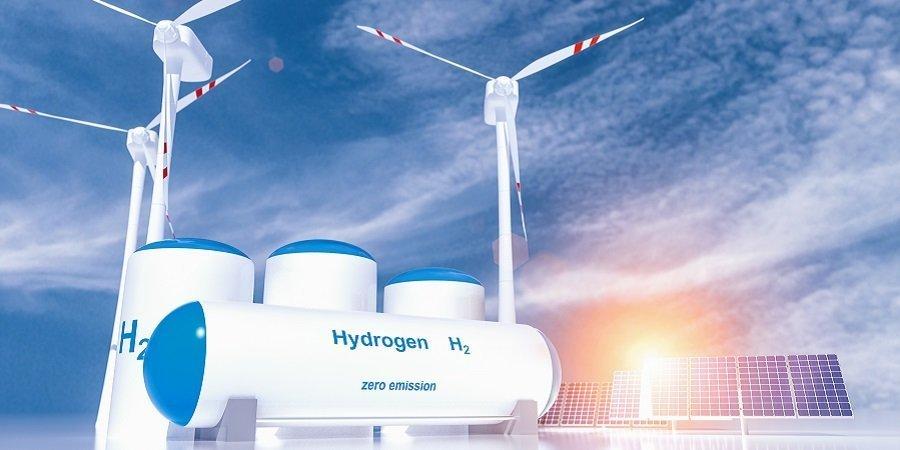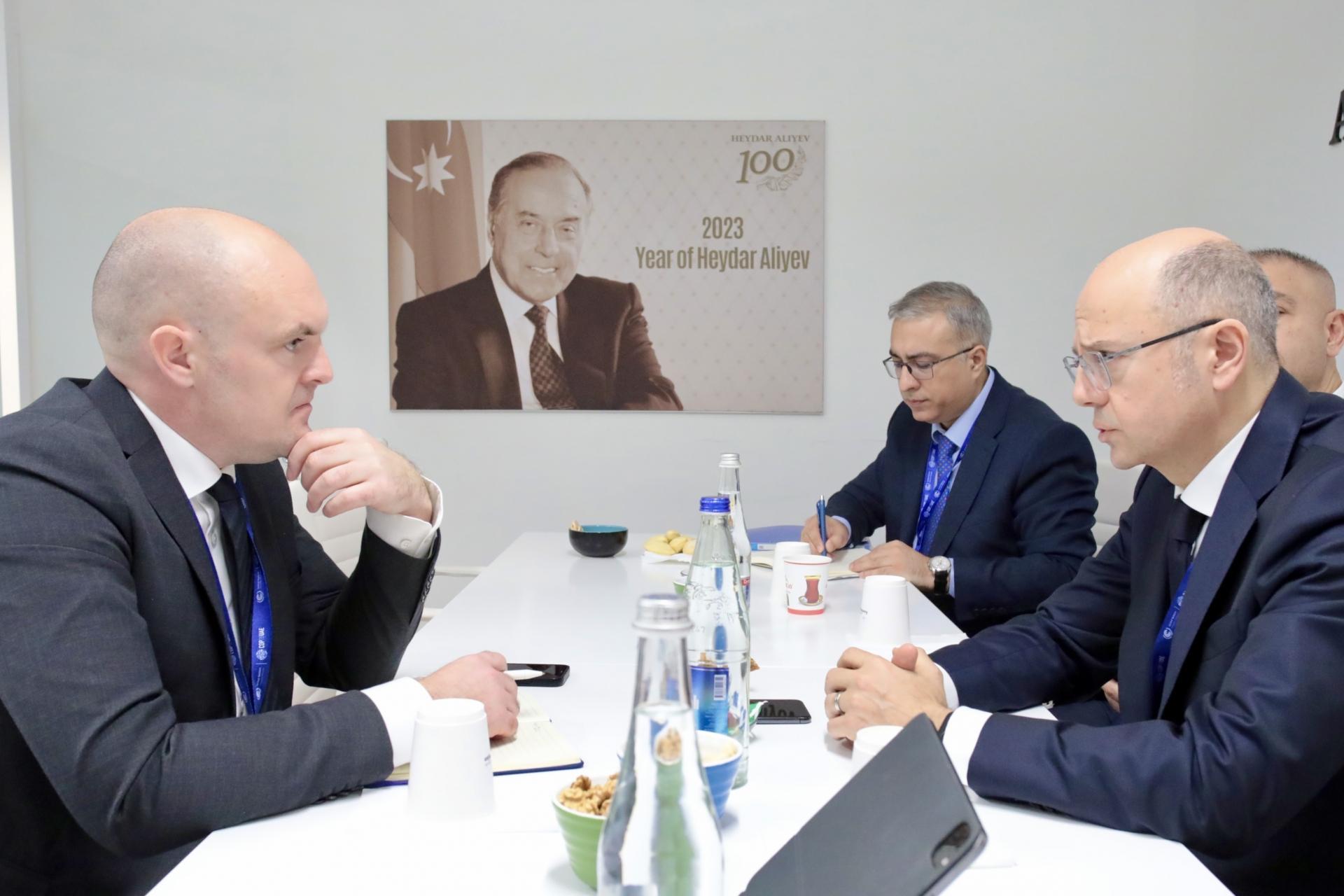Azerbaijan has its say in renewable revolution: focus on "green" hydrogen Review by Caliber.Az
Azerbaijan's participation in the global processes of the great energy transition of 2030 is a matter of the utmost importance. Among other things, our country plans to build powerful offshore wind generators and establish the production of "green" hydrogen. Demand for hydrogen fuel is growing worldwide, spurring the development of infrastructure for its supply and production capacity. Last December, for example, the EU Council and Parliament agreed on common rules for the internal market in gas, biomethane and hydrogen. These steps will make it easier for exporters to operate in the EU market. The test run of the Trans Adriatic Pipeline (TAP) for the transport of hydrogen, planned by the consortium TAP AG for January 2024, is of paramount importance in this respect.
According to the International Energy Agency (IEA), at least $440 billion will be invested annually in the renewable energy sector worldwide over the next 10 years, rising to about $4 trillion in developed countries by 2030. In addition to solar, wind, tidal and biogas production, countries in Europe, the US, China and Southeast Asia are looking to accelerate the production of low-carbon hydrogen fuel, as well as developing new battery technologies and hydrogen capture systems. IEA experts note that hydrogen fuel production is particularly promising and, together with the development of electric vehicles, could become a significant alternative for the transport sector, which is still dominated by petrol and diesel engines, in the coming years.

It is noteworthy that the development of hydrogen is most intensive in the countries of the old world: in September 2022, the European Commission approved the "IPCEI Hy2Use" project, the aim of which is the development of hydrogen fuel infrastructure in 13 EU countries. With €800 million from European funds, the EU is creating a so-called "hydrogen bank". In addition, the governments of Austria, Belgium, Denmark, Finland, France, Greece, Italy, the Netherlands, Poland, Portugal, Slovakia, Spain and Sweden are expected to provide around €5.2 billion of public funding for these purposes, and a further €7 billion of private investment is also planned. These funds will help accelerate work to create an industrial base for the production of hydrogen fuel. In total, €470 billion will be invested in the construction of electrolysis plants under the "Hydrogen Strategy for a Climate Neutral Europe" over 30 years. Today, the countries of northern Europe, in particular Finland, Denmark, Germany, Switzerland and Spain, are at the forefront of the development of the hydrogen industry, where large-scale hydrogen production projects have been launched.
It stands to mention that as recently as 2022, hydrogen accounted for less than 2 per cent of Europe's energy consumption and was mainly used for the production of chemicals such as plastics and fertilisers. The EU has now prioritised ensuring that renewable hydrogen production reaches at least 10 million tonnes by 2030, with a similar amount expected to be imported.
Last December, the EU Council and the European Parliament reached a preliminary political agreement on a Regulation establishing common internal market rules for natural and biogas and green hydrogen to fast-track the process of creating a pan-European market. The future legislation aims to facilitate the integration of renewable and low-carbon gases, in particular hydrogen and bio-methane, into the EU energy system. It will also establish a regulatory framework for dedicated hydrogen infrastructure and markets, as well as integrated network planning, and strengthen the security of supply, including external security of supply.
The measures taken in the EU are also very important for our country, as the Old World is seen as the main market not only for the supply of Azerbaijani natural gas but also for "green" hydrogen in the future. The steps taken by the TAP AG consortium to test the Trans Adriatic Pipeline for supplying hydrogen show that such plans are not far away from being realised. It is worth recalling that TAP is the European segment of the Southern Gas Corridor (SGC). Through this pipeline, Azerbaijan exports over 12 billion cubic metres of gas to Italy, Greece, Bulgaria and several other countries in Southern and Central Europe.
Recently, in the local media, the specialists of TAP AG announced their plans in this field: "This month we will conduct tests to assess the technical possibilities of transporting a mixture of natural gas and hydrogen through the TAP pipeline. We expect to receive the first results of the studies on the offshore part of the pipeline at the beginning of the second quarter of 2024". Studies in 2021 will confirm the feasibility of transporting a hydrogen mix through TAP, according to the consortium. The ultimate aim of the studies is the upgrading of the pipeline infrastructure for the supply of hydrogen, initially in the form of a blend with natural gas. The concentration of hydrogen in the TAP pipeline will gradually increase if demand is high and the hydrogen market develops in Europe.
An obvious beneficiary of the work of TAP AG is Azerbaijan, where steps have recently been accelerated to explore the potential of the hydrogen cluster and to attract international partners and investors to help develop it. In particular, with support from the European Bank for Reconstruction and Development (EBRD), work is underway to develop a hydrogen strategy for Azerbaijan: an inter-ministerial working group has been set up to develop the 2021 strategy, and the consultancy firm Advision, with support from the EBRD, is involved in developing a "Low Carbon Hydrogen Economy Market Study". The country paper under preparation includes current and future demand, current and projected production, cost analysis of hydrogen production, regulatory and financial framework, and an assessment of the potential for exporting low-carbon hydrogen to the global energy economy.
Development of Caspian Sea wind potential is considered promising in this respect and specialists from Azerbaijan's Ministry of Energy and International Finance Corporation have been involved in developing a road map for this sector.
According to preliminary data, the technical potential of wind energy in the Azerbaijani part of the Caspian Sea is estimated at 157 GW, but actual projects can only cover a small part of these opportunities, around seven to eight gigawatts. It is planned to establish the production of "green" hydrogen by electrolysis of seawater and its subsequent export to EU countries based on relatively cheap offshore wind power. In particular, the prospects of introducing in Azerbaijan technologies for the production of "green" hydrogen by electrolysis of seawater using offshore wind turbines, as well as the production of "blue" hydrogen by processing natural gas extracted from the sea, are being studied by leading British energy companies - BP and KBR - in partnership with Masdar from the UAE and Equinor from Norway. In December 2022, the Azerbaijani Energy Ministry and Australia's Fortescue Future Industries (FFI) signed an agreement to cooperate on developing renewable energy production and establishing green hydrogen production facilities in the country.
The signing of a Memorandum of Understanding between the Ministry of Energy of Azerbaijan and the Ministry of Investment of the United Arab Emirates was a major milestone in the development of hydrogen energy. Masdar of the United Arab Emirates is expected to be the lead partner in these projects.

The development of the hydrogen segment of RES will also be helped by the decision of the State Oil Company (SOCAR), taken at the end of last year, to create a subdivision of SOCAR Green LLC. The future plans of this structure include participation in the production of "green" hydrogen, as well as carbon capture, utilisation, storage and use (CCS and CCUS). SOCAR Green plans to cooperate with the Japan Bank for International Cooperation (JBIC) on decarbonisation projects. Abu Dhabi National Oil Company (ADNOC) is seen as another promising partner for SOCAR: during the recent COP28 conference in Dubai, the partners agreed to cooperate on "blue" hydrogen production and carbon management.
"Azerbaijan has the resource potential to produce green and blue hydrogen at economically viable prices. We expect to see this development in the mid-2030s," Roland Price, the World Bank's regional director for the South Caucasus, said recently.
However, according to the estimates of experts from the Boston Consulting Group (BCG), Azerbaijan's revenues from the export of "green" hydrogen to the EU can already reach $230-500 million per year in the initial stage, taking into account the support of RES projects within the framework of the European programme of preferential financing REPowerEU and the growing interest of investors in RES projects in our country.








